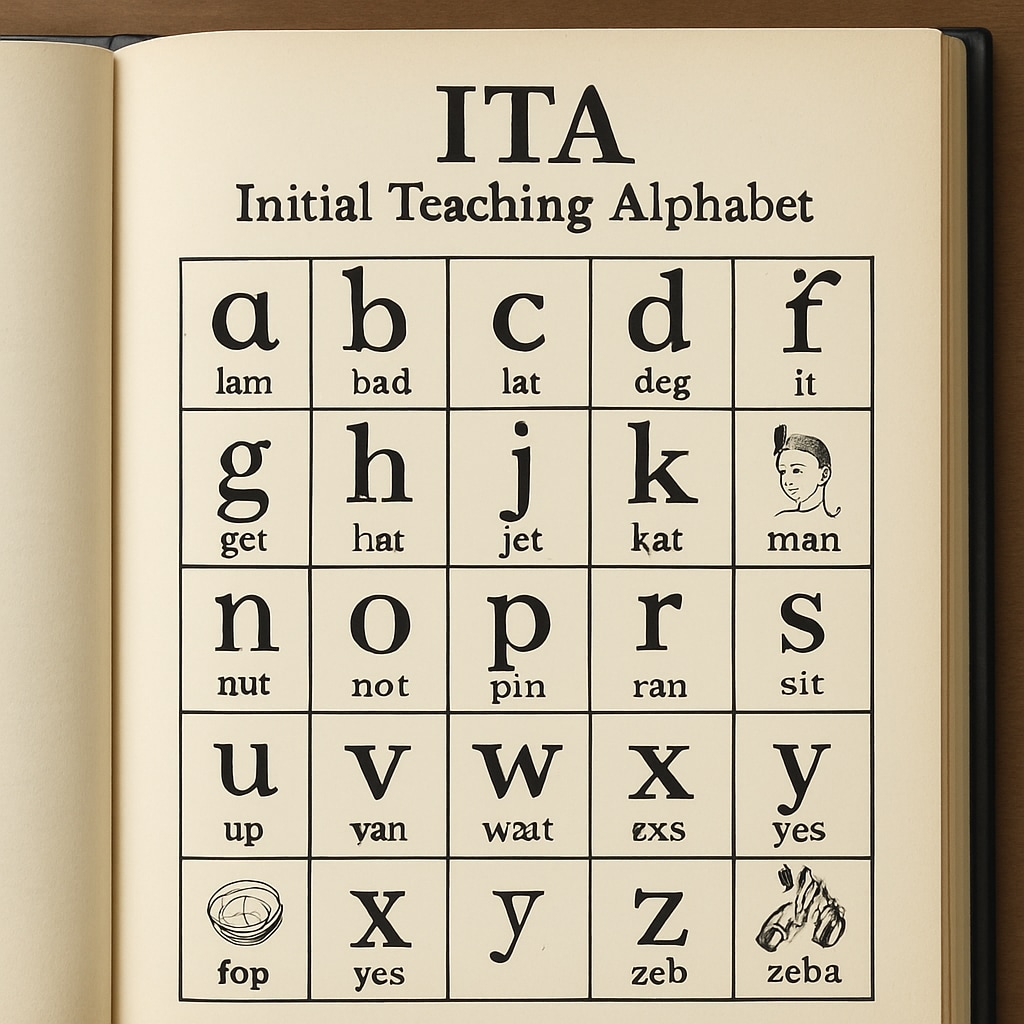The ITA teaching method, introduced as an educational experiment in the 70s, sought to simplify reading for beginners. While effective in helping children identify words faster, the method inadvertently contributed to lifelong spelling challenges for many. This article examines the origins, benefits, and long-term drawbacks of the ITA system, shedding light on how a seemingly progressive teaching tool had unintended consequences.
What Was the ITA Teaching Method?
The Initial Teaching Alphabet (ITA) was developed by Sir James Pitman in the early 1960s and became widely used in the 70s. The system replaced traditional English spelling with a simplified 44-character phonetic alphabet that corresponded directly to sounds. The primary goal was to eliminate the complexities of English orthography, making it easier for children to learn to read. For example, the ITA replaced the word “school” with “skool” and “phonics” with “foniks.”
Supporters of the ITA method argued that it allowed young learners to decode words more efficiently, focusing on phonetics before transitioning to traditional English spelling. However, this transition often proved challenging, leading to long-term issues in spelling accuracy and consistency.

The Short-Term Success of ITA
In its early implementation, ITA showed significant promise. Children using the system were able to recognize words and comprehend texts faster than their peers who learned through traditional methods. This success stemmed from the reduced cognitive load associated with phonetic spelling, which aligned neatly with speech sounds. As a result, ITA was adopted in many schools across the United States and the United Kingdom during the 70s.
However, the system’s success was limited to early reading stages. Once students transitioned to standard English spelling, the advantages of ITA began to fade. Teachers and researchers soon observed that many students struggled to unlearn the phonetic spellings ingrained by ITA, leading to persistent spelling errors and confusion.
Unintended Consequences: Lifelong Spelling Challenges
While the ITA method succeeded in accelerating early literacy, it came with significant drawbacks. The most notable was its impact on long-term spelling ability. Students who learned to read using ITA often found it difficult to adjust to the irregularities of conventional English spelling. Words like “school” and “thought” no longer followed the predictable patterns they had learned, creating frustration and confusion.
For some, these challenges persisted into adulthood. Misspellings became habitual, and the reliance on phonetic approximations hindered professional communication. This phenomenon, often described as a “spelling handicap,” was a direct consequence of the ITA system’s focus on phonetics over orthographic accuracy.

Lessons Learned from the ITA Experiment
The ITA teaching method serves as a cautionary tale for educational innovation. While well-intentioned, its designers underestimated the complexity of transitioning from a simplified system to the standard English writing system. This oversight highlights the importance of a holistic approach to literacy education that balances accessibility with long-term skill development.
Current literacy programs now prioritize methods that integrate phonetics with traditional spelling rules, such as synthetic phonics. These approaches aim to provide the best of both worlds: improving early reading skills without compromising spelling proficiency later in life.
Conclusion: The Lingering Impact of ITA
The ITA teaching method from the 70s offers valuable insights into the challenges of educational experimentation. While it achieved its goal of simplifying early reading, its unintended consequences—particularly its impact on lifelong spelling ability—continue to affect those who were taught under the system. As education evolves, the ITA story reminds us to carefully evaluate the long-term implications of new teaching methods before widespread implementation.
Learn more about the Initial Teaching Alphabet on Wikipedia and its historical context. For a broader perspective on literacy education, explore phonics methods on Britannica.
Readability guidance: Short paragraphs and clear transitions ensure ease of reading. Key points are summarized under relevant headings, with a focus on balancing early successes with long-term drawbacks.


